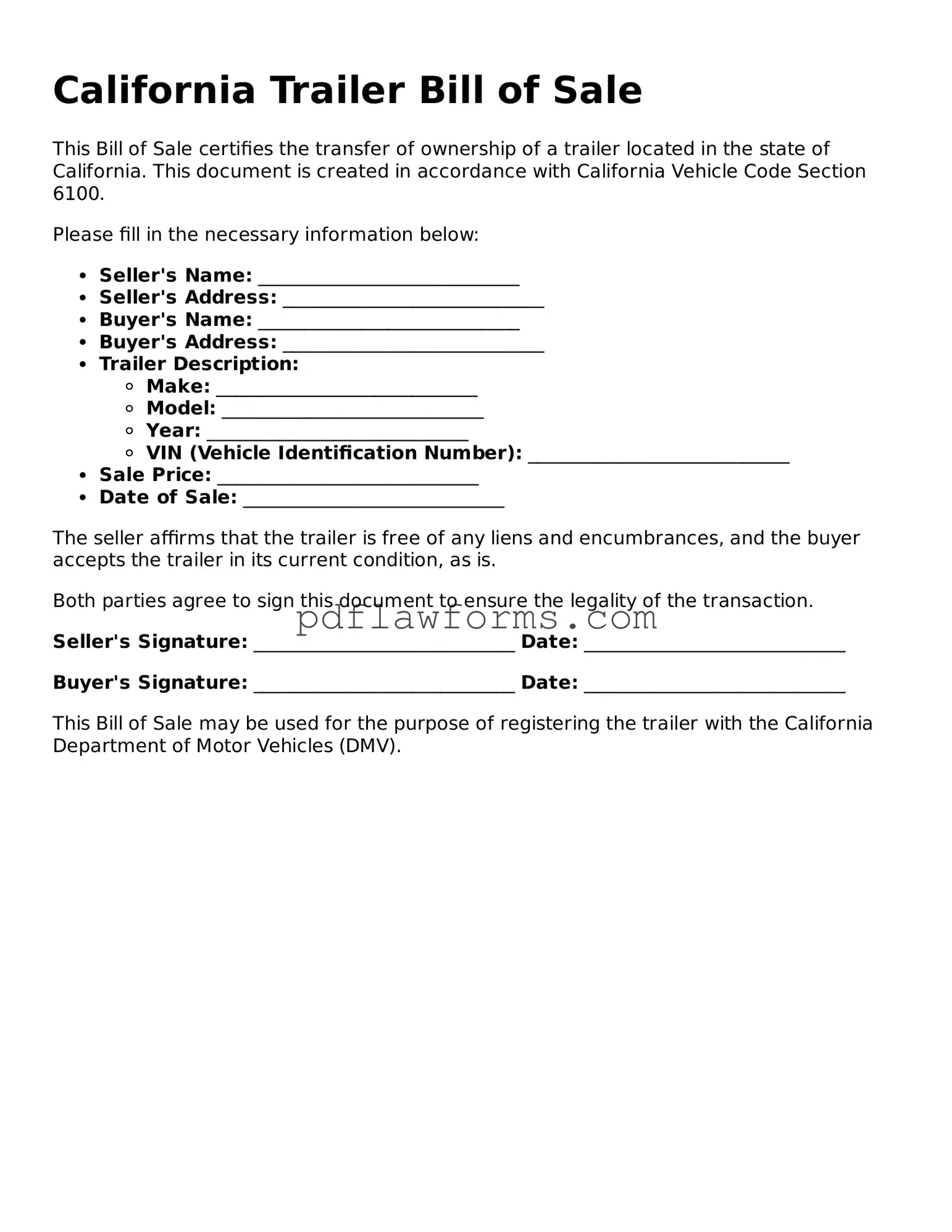Filling out the California Trailer Bill of Sale form can seem straightforward, but many people make common mistakes that can lead to complications down the road. One frequent error is failing to provide complete information about the trailer. This includes not only the make and model but also the Vehicle Identification Number (VIN). Without this crucial detail, the sale may not be legally recognized, and future ownership disputes could arise.
Another mistake often seen is neglecting to include the sale price. Buyers and sellers should ensure that the agreed-upon price is clearly stated on the form. If this information is omitted, it can create confusion and may affect the registration process with the Department of Motor Vehicles (DMV).
Many individuals also overlook the importance of signatures. Both the seller and the buyer must sign the bill of sale for it to be valid. If either party fails to sign, the document may not hold up in legal situations, which can lead to significant issues when transferring ownership.
In addition, incorrect dates can pose a problem. The date of the sale should accurately reflect when the transaction took place. An incorrect date can lead to complications with tax assessments or registration deadlines, potentially resulting in fines or other penalties.
People sometimes forget to provide their contact information. Including phone numbers and addresses is essential for future correspondence. If issues arise after the sale, having accurate contact information can help facilitate communication between the parties involved.
Another common oversight is not keeping a copy of the completed bill of sale. Both the buyer and seller should retain a copy for their records. This document serves as proof of the transaction and can be critical if disputes arise later regarding ownership or payment.
Some individuals may also misinterpret the form's sections. Each part of the bill of sale has a specific purpose, and misunderstanding these sections can lead to incomplete or incorrect information. It is vital to read and understand what each section requires before filling it out.
Finally, many people rush through the process, leading to careless mistakes. Taking the time to carefully review the completed form can help catch errors before they become problematic. A thorough review ensures that all necessary information is accurate and complete, paving the way for a smooth transaction.
